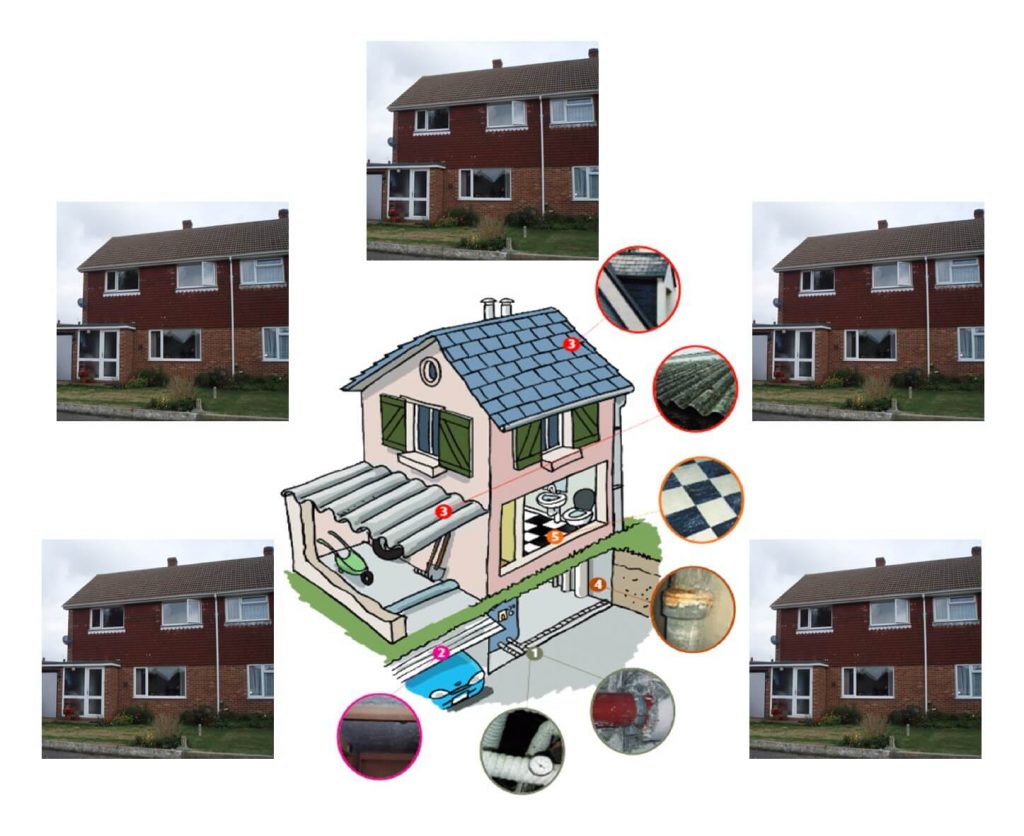
Table of Contents
Asbestos Surveys are Essential: One in Six Dwellings in England Built 1980-2000
You’re thinking of getting the builders in to do some work on your home or work premises. You’ve heard that some buildings could still contain “asbestos” – and asbestos surveys are required before any work proceeds. You may have even tried to take a close look at yourself. But you’re not sure exactly what’s behind the fireplace, window frames, ceiling panels, wall recesses, fitted cupboards, etc. And what happens to your property if asbestos removals are necessary?
The Health & Safety Executive (HSE), along with the building and construction industry, always instruct property owners or duty holders to arrange for asbestos experienced surveys to be carried out. The likelihood of finding asbestos containing materials (ACMs) within the fabric of a building constructed prior to 2000 cannot be ignored, just because two decades have passed since the UK banned imports of the last asbestos fibre type (white ‘chrysotile’).
Asbestos surveys needed for at least 1.5 million UK properties
The UK has the oldest housing stock in Europe, according to official data analysis (Eurostat, EU-SILC 2015). In 2019, there were 24.4 million dwellings in England, according to GOV.UK, of which, nearly four in ten (39.7 per cent) were built between 1946 – 1980, the peak years of active asbestos use in British residential and commercial building – and prior to the first asbestos ban in 1885. A further 1 in 6 buildings (15.6 per cent) were constructed between 1980 and 2000.
Even after 2000, stockpiled asbestos materials were known to be commonly used in ongoing and new building works. Today, at least a million domestic properties – and half a million commercial properties – are likely to contain ACMs, according to the HSE.
Asbestos can easily be disturbed and hazardous fibre dust particles are released. Even minor renovation work, from drilling, hammering and fixing to simply abrading surfaces prior to painting and redecorating. So what action should you take the moment it is suspected that a surface material or feature contains asbestos?
Failed to get an asbestos survey but now ACMs are found? What you must do…
The first two vital steps are to stop work immediately and clear the area of all personnel. This is particularly important for those individuals on-site who are not wearing Personal Protection Equipment (PPE) or Respiratory Protection Equipment (RPE)
Next, any release of asbestos dust or debris on clothing should be wiped down with a damp cloth and disposed of in a sturdy, sealed bag labelled as ‘asbestos waste’ and incident details fully recorded. The top layer of clothing should also be removed before moving away from the source of the dust release. All asbestos contaminated clothing and towels should also be securely placed in the asbestos waste bag. Caution tape and warning signs should then be installed around the affected area to prevent the risk of further exposures.
An asbestos management survey should always be carried out first
Under Regulation 4 “Duty to Manage” (Control of Asbestos Regulations 2012, CAR 2012), an experienced asbestos surveys and removals contractor should always be instructed to carry out a building inspection, known as an Asbestos Management Survey, prior to any renovation work proceeding. It’s a non-intrusive procedure where samples of any suspect materials are collected and sent for laboratory analysis to confirm the presence of asbestos and fibre type.
The type, extent and condition of any asbestos materials found will determine if its safer for them to be encapsulated and left securely in place under a detailed asbestos management plan. If it’s necessary for asbestos removals to take place, the Regulations require “raw asbestos and asbestos waste to be properly packaged, labelled, stored and transported”. Temporary storage should be within a clearly labelled and lockable skip prior to being transported to an official Waste Transfer Station (WTS) in accordance with Hazardous Waste Regulations in England and Wales.